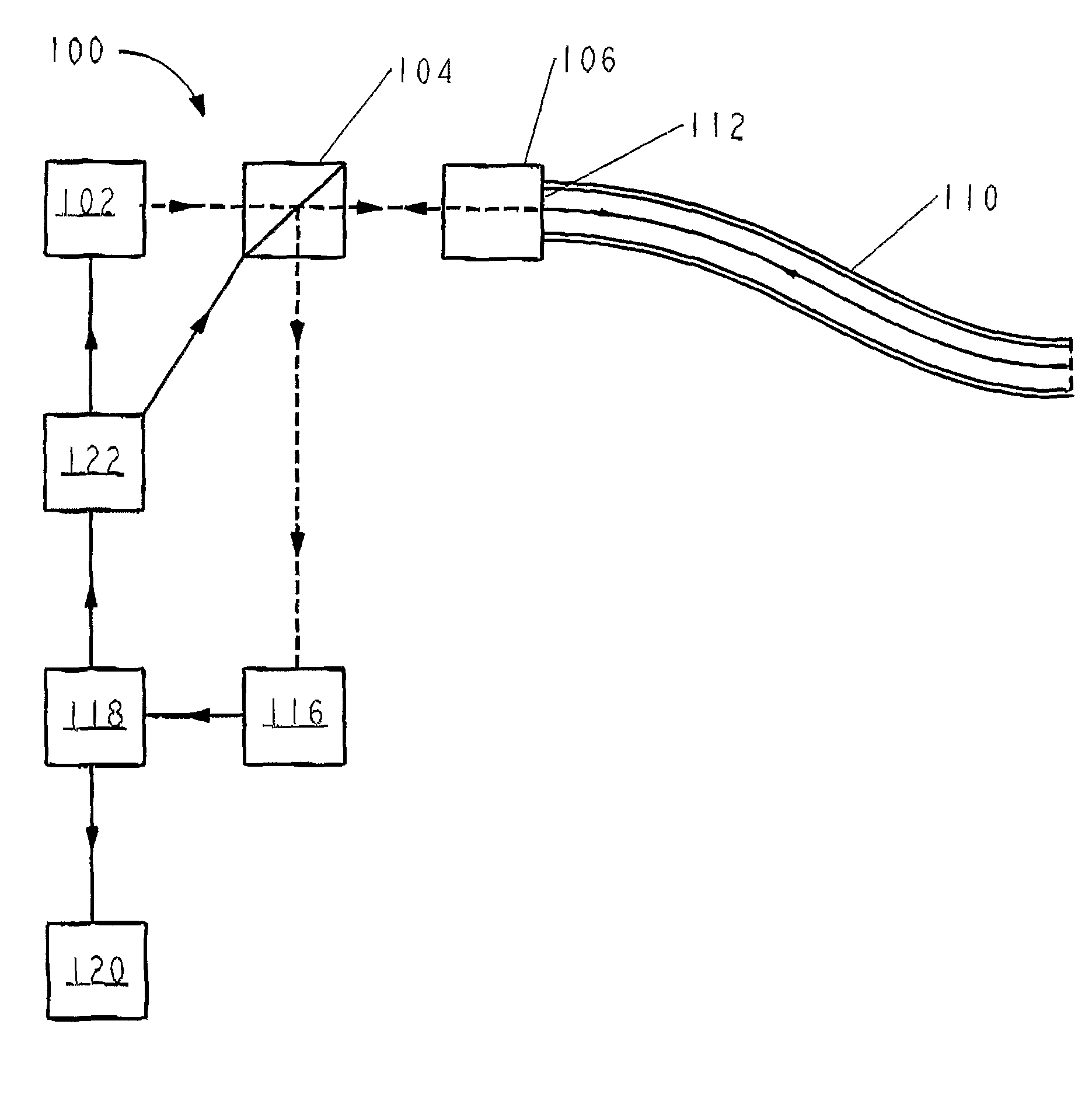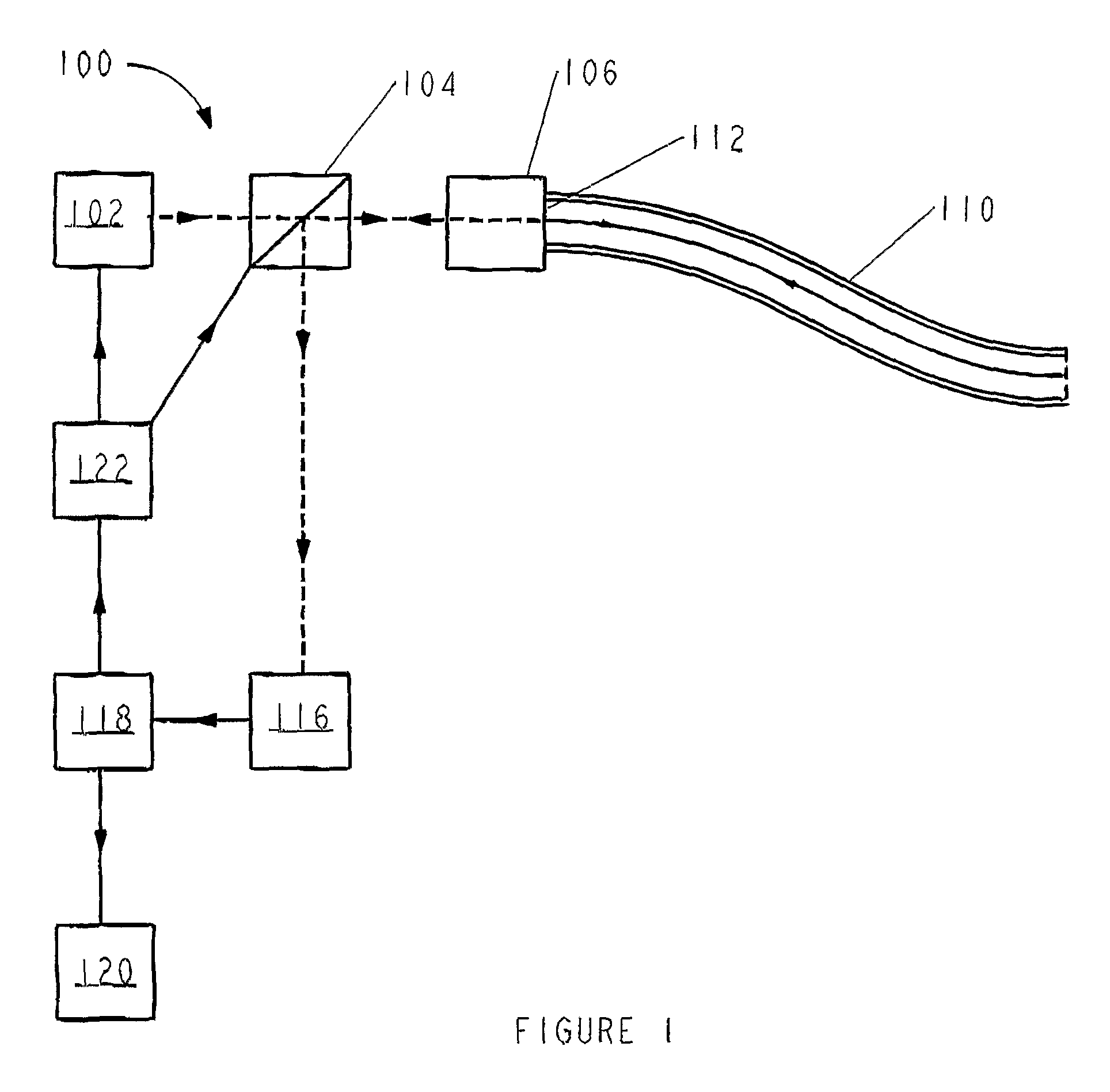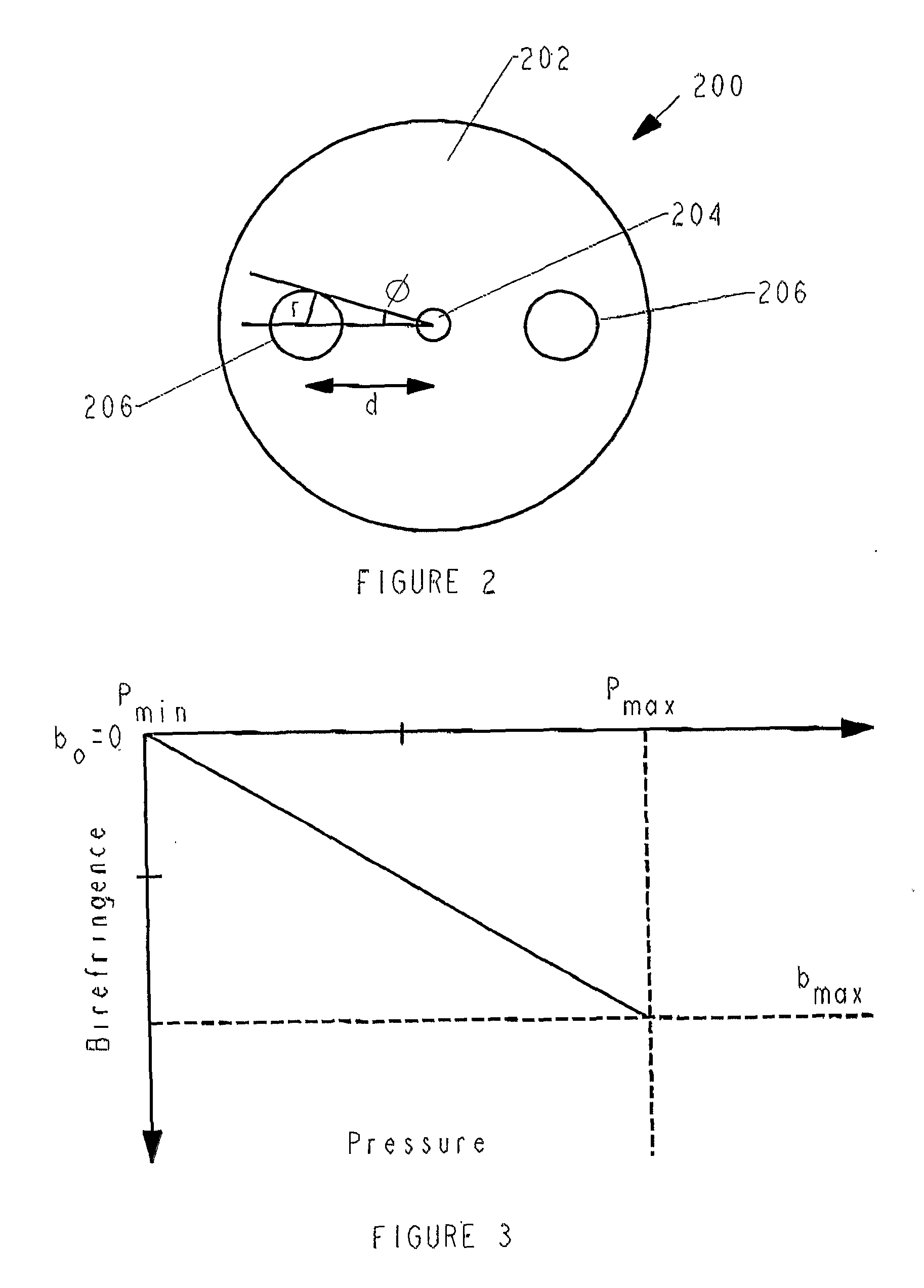Method and Apparatus for Detecting Pressure Distribution in Fluids
a technology of fluids and pressure distribution, applied in the direction of fluid pressure measurement, optical radiation measurement, instruments, etc., can solve the problems of difficult to detect the pressure distribution of fluids, the inability to use side-hole fibres incorporating either fbgs or rocking filters, and the inability to measure the pressure distribution. , to achieve the effect of easy measurement and simple deployment and maintenance of waveguides
- Summary
- Abstract
- Description
- Claims
- Application Information
AI Technical Summary
Benefits of technology
Problems solved by technology
Method used
Image
Examples
Embodiment Construction
[0089] Referring to FIG. 1, a pressure sensing apparatus 100 comprises a light source 102 which, in this embodiment, is a tunable laser able to transmit coherent light across a range of wavelengths between around 1550 nm and 1560 nm. (In other embodiments, any range of wavelengths between about 1300 nm and 1600 nm could be used.) Light transmitted by the light source 102 is directed into a polarisation processing unit (PPU) 104. The PPU 104 is operable to condition the polarisation state of the light received from the light source 102 and to transmit some of the light incident on it from the light source 102 to an optical coupler 106.
[0090] The optical coupler 106 is attached to an end 112 of an optical fibre 110 and directs light from the PPU 104 into the optical fibre 110 through the end 112 of the optical fibre 110 to which it is attached. The optical coupler 106 also transmits light emitted from the end 112 of the optical fibre 110, for example by backscattering in the optical ...
PUM
 Login to View More
Login to View More Abstract
Description
Claims
Application Information
 Login to View More
Login to View More - R&D
- Intellectual Property
- Life Sciences
- Materials
- Tech Scout
- Unparalleled Data Quality
- Higher Quality Content
- 60% Fewer Hallucinations
Browse by: Latest US Patents, China's latest patents, Technical Efficacy Thesaurus, Application Domain, Technology Topic, Popular Technical Reports.
© 2025 PatSnap. All rights reserved.Legal|Privacy policy|Modern Slavery Act Transparency Statement|Sitemap|About US| Contact US: help@patsnap.com



